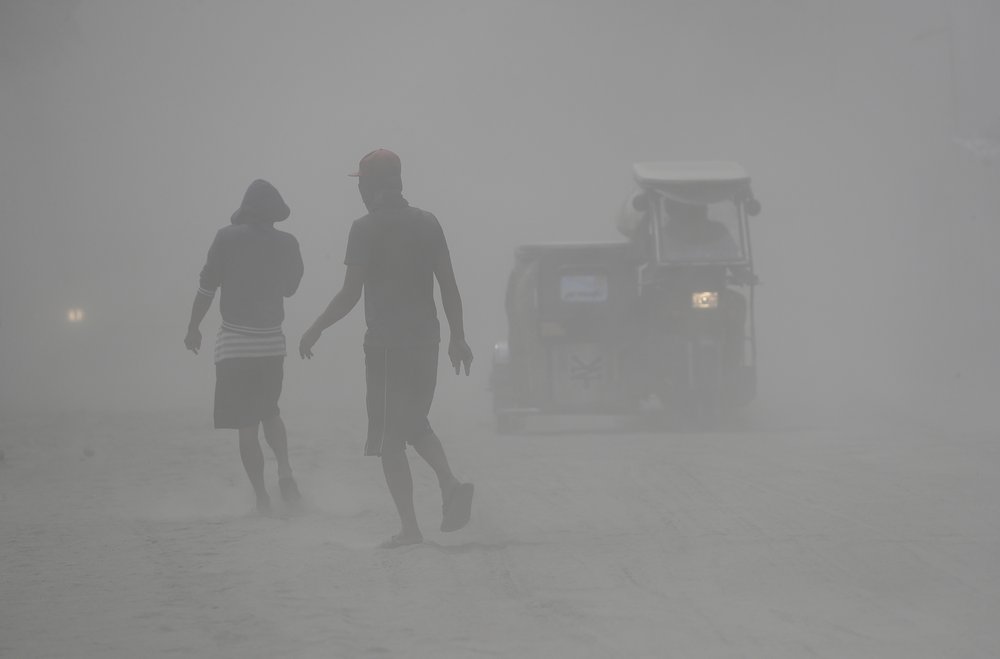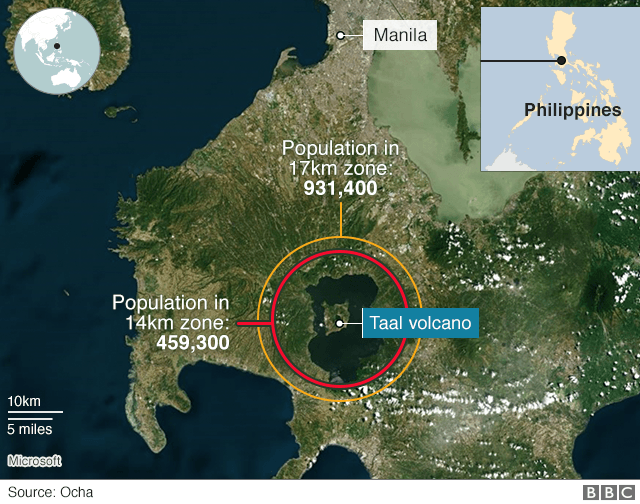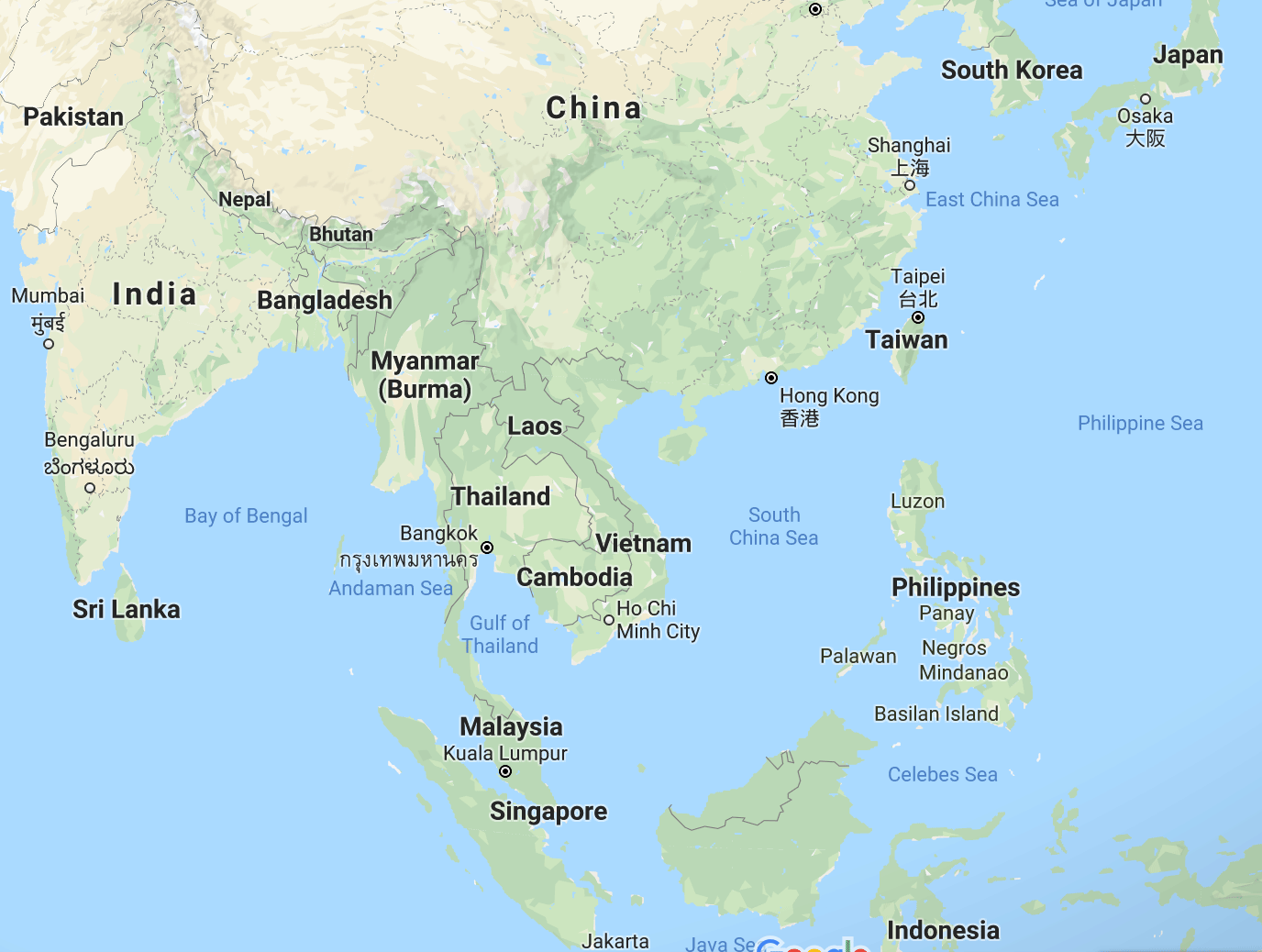World #3 – Philippines warns of ‘explosive eruption’ after Taal Volcano spews ash near Manila
Tuesday's World Events — Posted on January 14, 2020
(by Jinky Jorgio, Jessie Yeung and Alaa Elassar, CNN) Manila, Philippines— Philippine authorities have urged a “total evacuation” of [close to one million or more] people near the capital Manila, after a volcano spewed ash up to nine miles into the air Sunday prompting warnings of a possible “explosive eruption.”
The Philippine Institute of Volcanology and Seismology (PHIVOLCS) has raised the alert level to four, meaning an “explosive eruption” could happen in the coming hours or days. Its highest alert level is five, indicating an eruption is taking place.
In explosive eruptions, magma is fragmented and violently expelled from the volcano — think of a soda can after being shaken — as opposed to thick lava oozing out.
Taal Volcano isn’t actually very big — but it’s considered among the world’s most dangerous, owing to the number of people that live in its immediate vicinity, said Erik Klemetti, a volcanologist at Denison University.
PHIVOLCS has requested a “total evacuation” of everyone within a 10.5 miles radius around the volcano.
As of Monday, more than 16,400 people had sought shelter in temporary evacuation centers set up by the authorities. The total number of evacuees is likely to be higher, however, with many people choosing to stay with family members and relatives in other parts of the country.
Federal authorities are helping with the response and evacuation operation. The army sent 20 military vehicles and 120 personnel to help affected residents, and the secretary of national defense said helicopters were on standby to evacuate people.
The defense secretary also urged residents near the eruption to evacuate, and not to hesitate in leaving their homes. Aid organizations like the Red Cross are assisting on the ground by sending rescue vehicles and supplies.

Residents walk in a cloud of ash as Taal Volcano continues to spew ash on Monday Jan. 13, 2020, in Tagaytay, Cavite province, south of Manila, Philippines. Red-hot lava gushed out of the Philippine volcano Monday after a sudden eruption of ash and steam that forced villagers to flee en masse and shut down Manila’s international airport, offices and schools.(AP Photo/Aaron Favila)
Residents within the immediate area are most at risk from the effects of a potential eruption, including a possible volcanic tsunami in the lake surrounding the volcano, according to PHIVOLCS.
The lava now beginning to erupt is dangerous, Klemetti said, as it’s creating “a big lava fountain” that could then spill into nearby towns. But volcanic ash is the biggest danger, said Joseph Michalski, director of the Earth and Planetary Science division at the University of Hong Kong.
“The ash is what will kill you, not the lava,” Michalski told CNN. “The ash flow from an exploding volcano can travel hundreds of kilometers an hour.”
Other threats include deadly toxic gases emitted from the eruption, and mud flows caused by ash mixing with water vapor in the atmosphere, Michalski added.
If it erupts again, the ash — which carries microscopic shards of glass — could potentially be carried 100 kilometers (62 miles) or more, contaminating the air and water supplies in distant locations. More than 25 million people live within 100 kilometers of the volcano.
“(The shards of glass) are hazardous to lungs,” Michalski said. “You don’t want stuff like that in your lungs. It can get lodged in there and make you quite ill.”
Michalski said it’s too early to tell just how big the impending eruption could be — Taal Volcano has a long history of frequent, small eruptions. However, it’s also potentially more dangerous than other volcanoes because of its location on a lake — the interaction of magma with water can make a volcanic eruption much more explosive.
On Sunday, the volcanic ash spread as far as Quezon City north of Manila, prompting the suspension of all flights at the capital’s international airport.
Photos from the aftermath on Sunday show ash mixing with rain, creating a thick black sludge that blanketed cars, streets, and homes in some towns. Ash is even heavier than snow, meaning excessive pile-ups, especially when mixed with rain, can cause roofs to collapse.
Apart from immediate health hazards and structural damage, a potential eruption could also bring long-term consequences for the area’s economy.
The volcano is surrounded by a lake, which is a popular attraction — meaning many of the towns in the vicinity are tourism hot spots. There are several amusement parks, lakeside resorts and yacht clubs within the 17-kilometer (10.5 mile) zone.
The holiday town of Tagaytay, which lies close to the water’s edge, is a popular getaway for Manila residents who often take boats onto the lake and hike up the volcano.
The future of this tourism economy could depend on how destructive the potential second eruption is — if it’s big enough, it could wipe out the entire volcanic island in the middle of the lake, said Michalski.
It could also serve a severe blow to the many farmers and fishermen who live in the area and rely on the lake and its surrounding land for their livelihoods.
The volcano has seen powerful eruptions before — one eruption in 1754 lasted six months, and its deadliest eruption took 1,335 lives in 1911. It erupted again in 1965, killing 190 people, and continued to have four more minor eruptions in the years since.
Mariton Bornas, chief of volcano monitoring at PHIVOLCs, said that the agency had monitored tremors at the volcano as early as March 2019 — but they were surprised by the rapid speed of the eruption on Sunday.
CNN’s Eric Cheung and Amanda Jackson contributed to this report. Published at CNN .com on January 13, 2020. Updated 4:32 PM ET. Reprinted here for educational purposes only. May not be reproduced on other websites without permission from CNN.
Questions
1. For PHILIPPINES, give the following information:
- capital
- location/the countries that share its borders
- the religious breakdown of the population
- the type of government
- the chief of state (and head of government if different) If monarch or dictator, since what date has he/she ruled? – include name of heir apparent for monarch
- the population
Find the answers at the CIA World FactBook website. For each country, answers can be found under the “Geography” “People” and “Government” headings.
NOTE: Before answering the following questions, read the “Background” and watch the videos under “Resources” below.
2. For PHILIPPINES:
a) list the who, what, where and when of the news item
b) Why is the Taal Volcano considered among the world's most dangerous despite being one of the smallest?
c) Experts have warned of a possibility of an explosive eruption. What is the difference between an explosive eruption and a regular volcanic eruption?
d) How are the government and the Red Cross assisting people in the evacuation zones?
e) In addition to the health hazards from the ash, how might further eruption affect the area’s economy in the long-term?
Background
Taal Volcano (from BBC News):
- The active volcano is at the centre of the 230 sq km Lake Taal, formed by prehistoric eruptions
- Taal is a "complex volcano," which means it doesn't have one vent or cone but several eruption points that have changed over time
- The head of Phivolcs calls Taal "a volcano within a volcano" and says as such it is "very dangerous"
- Taal has erupted in different ways more than 30 times in the past 500 years - most recently in 1977
- A 1911 eruption killed about 1,500 people. A 1974 eruption lasted several months
Government volcanologists said Monday they would keep the alert level at four out of a possible five, which indicates a hazardous eruption may occur in a matter of hours or days. If that happens, the volcano could send large amounts of hot lava flying into the sky. But a different and possibly more-dangerous phenomenon could also occur known as base surge.
Base surge is when massive clouds of ash, rocks and gas are thrust out horizontally at speeds of more than 35 miles an hour. The clouds move with such force that they could travel over the lake that surrounds Taal Volcano and sweep across the mainland, potentially damaging life and property, Renato Solidum, who is in charge of Phivolcs, said in an interview.
These clouds “can burn you, asphyxiate you, crush you, mangle you,” Dr. Solidum said. “This is the worst-case scenario.”
Base surges have occurred at Taal before, giving the relatively small volcano a violent history. An eruption in 1965 accompanied by outward-pushing clouds killed 200 people. A similar disaster in 1911 left an estimated 1,300 dead, Dr. Solidum said. And in 1754, the clouds extended to areas all around the volcano, but accurate records of the number of casualties aren’t available.
A major eruption could also cause a volcanic tsunami, authorities warned. That could result from debris shooting out of the volcano and hitting the waters of the surrounding lake, generating big waves. Dr. Solidum said there was no reliable way to estimate how likely it was that a base surge or volcanic tsunami would occur.
Since Sunday afternoon, seismologists have recorded at least 144 volcanic earthquakes in the Taal region. That is an indication that the magma is moving up the volcano with such force, it is causing fissures or cracks in the ground to shake, Dr. Solidum said. (From a Wall Street Journal report by Niharika Mandhana, Updated Jan. 13, 2020 11:25 am ET)


